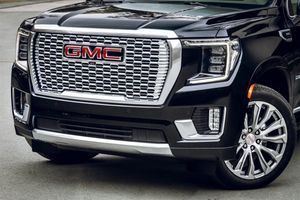
Tesla (NASDAQ: TSLA) has sent ripples of concern through the financial markets after reporting what analysts widely deemed a "disappointing" third-quarter 2025 earnings report. Despite achieving record revenue and vehicle deliveries, the electric vehicle giant saw a significant contraction in its net profit and operating margins, failing to meet ambitious investor expectations. This profit slump has triggered an immediate and sharp market sell-off, with Tesla's stock experiencing a notable decline as investors recalibrate their outlook on the company's profitability and future growth trajectory amidst increasing competition and strategic shifts.
The earnings report, released recently, highlighted a growing divergence between Tesla's impressive sales volume and its bottom-line performance. The market's reaction underscores a shift in investor focus from pure growth metrics to sustainable profitability, particularly as the EV market matures and competitive pressures intensify. This event is prompting a broader re-evaluation of valuation models for high-growth tech and automotive companies.
Deep Dive into Tesla's Q3 Disappointment
Tesla's third-quarter 2025 financial results revealed a complex picture: record-breaking achievements overshadowed by a concerning erosion of profitability. The company posted a record total revenue of $28.1 billion, a commendable 12% increase year-over-year, driven by a record 497,099 vehicle deliveries and robust growth in energy storage deployments. However, the good news largely stopped there. GAAP net income sharply narrowed to $1.4 billion, representing a significant decrease of approximately 37% to 40% compared to Q3 2024. Adjusted earnings per share (EPS) landed at $0.50, falling short of analyst consensus estimates which ranged between $0.53 and $0.55 per share.
The most critical factor driving investor disappointment was the severe compression of the operating margin, which plummeted to approximately 5.8% from over 10% a year earlier. This decline was primarily attributed to Tesla's aggressive strategy of reducing vehicle prices by up to 25% across various markets in a bid to stimulate demand and maintain market share. Compounding this were increased operating expenses, which rose to $3.43 billion—a 50% year-over-year increase—largely due to substantial investments in artificial intelligence (AI) and autonomous vehicle technology. Furthermore, revenue from the sale of regulatory credits, once a significant contributor to Tesla's margins, declined by a substantial 44% year-over-year, bringing in only $417 million compared to $739 million in the prior year.
The timeline leading up to this moment saw Tesla pushing for volume growth throughout 2025, often at the expense of per-unit profitability. This strategy, while successful in boosting deliveries, set the stage for the margin squeeze observed in Q3. Key players involved include Tesla's management, led by CEO Elon Musk, who during the earnings call, reportedly placed significant emphasis on future AI and robotaxi initiatives, which some analysts felt overshadowed discussions on the core automotive business's immediate profitability challenges. The initial market reaction was swift and negative. Shares of Tesla (NASDAQ: TSLA) immediately slipped in after-hours trading following the earnings release on October 22nd, 2025, and continued to decline by over 3% in pre-market and subsequent trading on October 23rd, 2025. Analyst sentiment turned cautious, with several firms revising their near-term profit forecasts downwards and expressing concerns about margin risk. While some long-term bulls remained optimistic about Tesla's technological leadership, the overall consensus from 53 analysts now averages a "Hold" rating with a target price around USD 370, roughly 16% below current levels, signaling a period of investor caution.
Ripple Effects: Winners and Losers in the Wake of Tesla's Setback
Tesla's (NASDAQ: TSLA) disappointing third-quarter earnings are poised to send significant ripple effects across the automotive and related industries, creating both opportunities for rivals and challenges for those deeply integrated with Tesla's ecosystem. The narrative of an invincible EV leader is being questioned, leading to a potential redistribution of market share and investor confidence.
Potential Winners:
Chinese EV manufacturers, particularly BYD (SHE: 002594), stand to gain considerably. BYD has already surpassed Tesla in global EV sales and its aggressive pricing and expansion strategies are well-positioned to capitalize on any perceived weakness from the American giant. Other Chinese players like Nio (NYSE: NIO) and Xpeng (NYSE: XPEV), focusing on premium segments, could also benefit if Tesla's brand prestige or technological lead is diminished. Traditional automakers with robust EV programs, such as Ford (NYSE: F) and General Motors (NYSE: GM), are also in a position to capture market share, especially in North America. These companies are leveraging their vast manufacturing capabilities and extensive dealer networks to become serious contenders, and a stumble by Tesla could accelerate their inroads. Niche luxury EV makers like Rivian (NASDAQ: RIVN) and Lucid (NASDAQ: LCID), despite their own production challenges, might attract consumers seeking high-end alternatives if Tesla's performance falters.
Battery suppliers with diversified customer portfolios, such as CATL (SHE: 300750) and LG Energy Solution (KRX: 373220), are likely to be more resilient. CATL, a global leader, supplies batteries to a wide array of automakers including BMW (ETR: BMW), Mercedes (ETR: MBG), and Volkswagen (ETR: VOW3), alongside Tesla. If other automakers gain market share, these diversified suppliers could see stable or even increased demand overall. Similarly, charging infrastructure companies whose networks are increasingly adopted by a diverse range of EVs, especially with the widespread adoption of Tesla's North American Charging Standard (NACS) by other manufacturers, could benefit from increased utilization as the non-Tesla EV fleet grows.
Potential Losers:
The immediate and most significant loser is, of course, Tesla (NASDAQ: TSLA) itself, facing investor skepticism and a declining stock price. Beyond Tesla, the broader EV market sentiment could suffer. As Tesla is often seen as a bellwether for the industry, its struggles could dampen investor confidence across the entire EV sector, potentially leading to a general dip in valuations for all EV companies and making it harder for smaller players to secure necessary investments. Battery suppliers heavily reliant on Tesla, such as Panasonic (TYO: 6752), could face headwinds. While Tesla is increasing its in-house battery production, it still depends on external partners, and a significant decrease in Tesla's production or sales would directly impact these suppliers. Furthermore, traditional automakers already struggling with the costly and complex transition to EVs might find the challenges highlighted by Tesla's report to be an added burden, potentially increasing pressure on their investment plans and stock performance.
Wider Significance: A Bellwether for the Evolving EV Landscape
Tesla's (NASDAQ: TSLA) Q3 2025 earnings, despite record deliveries, serve as a potent bellwether for the broader electric vehicle industry, signaling a pivotal moment of maturation, intense competition, and shifting consumer dynamics. The company's struggle with profitability, driven by price cuts and rising costs, is not an isolated incident but a reflection of overarching trends shaping the global automotive sector.
This event underscores the evolving nature of EV demand. While global EV sales continue to grow, projected to exceed 20 million units in 2025, the market is becoming more discerning. The "pull-forward effect" observed in the U.S. due to the expiring $7,500 federal tax credit at the end of Q3 2025 suggests that a significant portion of recent demand was incentive-driven, potentially indicating a softer market ahead. The resurgence of hybrid vehicles as a viable alternative to pure battery electric vehicles (BEVs) further complicates the demand picture, as consumers weigh cost, range anxiety, and charging infrastructure availability.
The most prominent trend highlighted by Tesla's performance is the intensifying price wars and competition. Tesla's market share in the U.S. EV market has reportedly dropped to 41% in Q3 2025 from 49% in Q3 2024, a clear indication of the aggressive entry and expansion of numerous rivals. Chinese manufacturers like BYD (SHE: 002594), which surpassed Tesla in global sales in Q3 2025, along with Nio (NYSE: NIO) and Xpeng (NYSE: XPEV), are expanding globally with highly competitive and often more affordable offerings. Traditional automakers such as Volkswagen (ETR: VOW3), General Motors (NYSE: GM), Ford (NYSE: F), and Hyundai (KRX: 005380) are rapidly scaling up their EV production, fragmenting the market and making it increasingly challenging for any single player to maintain high margins.
The ripple effects extend across the industry. Tesla's margin contraction puts increased scrutiny on the profitability of all EV manufacturers, both pure-plays and legacy automakers. Investors are becoming more skeptical of companies heavily reliant on future technological promises without demonstrating strong current financial performance. This could lead to a re-evaluation of investment strategies across the sector. In terms of regulatory and policy implications, the expiration of the U.S. federal tax credit is a critical factor that will impact all manufacturers' sales in the coming quarters. Furthermore, the global trend of tariffs and trade policies, such as U.S. tariffs on imported vehicles and parts and Europe's tariffs on Chinese EVs, is increasing manufacturing costs and influencing supply chain strategies, potentially dampening overall demand.
Historically, this situation draws parallels to the 2008-2010 automotive industry crisis, where major automakers faced dramatic downturns due to shifting consumer preferences (away from large SUVs due to rising fuel prices) and broader economic recession. Like Tesla today, these companies struggled when their core product segments faced unexpected headwinds, forcing a painful re-evaluation of strategies and pricing. Similarly, the "tech bubble" corrections and disappointing earnings from high-growth tech stocks offer a cautionary tale. Companies with sky-high valuations based on future potential often face sharp corrections when current earnings fail to meet lofty expectations, especially when "futuristic projects" (like Tesla's robotaxis and AI) overshadow the realities of the core business's profitability. Tesla's strong performance in its energy generation and storage division, however, offers a crucial lesson in diversification, akin to how some legacy automakers weathered crises by having robust alternative revenue streams.
What Comes Next: Navigating a Crossroads of Innovation and Competition
Tesla's (NASDAQ: TSLA) disappointing Q3 2025 earnings mark a critical juncture, compelling the company to navigate a complex landscape defined by intensifying competition, evolving consumer demands, and the ambitious pursuit of futuristic technologies. The period ahead will test Tesla's agility and strategic foresight as it aims to balance profitability with its visionary long-term goals.
In the short-term, Tesla faces the immediate challenge of addressing its squeezed profit margins. This will likely necessitate a more nuanced price strategy adjustment, moving beyond broad price cuts towards targeted incentives or emphasizing the total cost of ownership benefits of EVs. A crucial strategic pivot will be the product line expansion and affordability. With rivals, particularly Chinese manufacturers, flooding the market with more accessible EVs, Tesla's planned launch of a more affordable "Model Q" (or "Model 2"), potentially priced under $30,000 and expected in the first half of 2026, becomes paramount. Continued focus on production efficiency and scaling up 4680 battery cell production are vital to reducing vehicle costs. Furthermore, leveraging its non-automotive segments, particularly the rapidly growing energy division (Powerwall and Megapack), will be key to diversifying revenue streams and offsetting automotive margin pressures. The "pull-forward effect" from the expiring U.S. federal EV tax credit in Q3 2025 also suggests a potential slowdown in U.S. EV demand in Q4 2025 and early 2026, which Tesla must prepare for.
Looking at the long-term possibilities, Tesla's vision extends far beyond traditional car manufacturing. Significant strategic pivots are anticipated in autonomous driving and robotaxis, with advancements in Full Self-Driving (FSD) software and the planned launch of unsupervised FSD services aiming to tap into a potentially trillion-dollar robotaxi market. The ambitious venture into AI and robotics with the Optimus humanoid robot represents another major pivot, with Elon Musk envisioning it as eventually more valuable than the car business itself, targeting mass production by the end of the decade. Continued Gigafactory expansion globally and strategic entries into new markets, particularly in Asia, are crucial for sustaining growth. The company also aims for increasing revenue from software and services, moving towards subscription models for connectivity and leveraging its fleet for AI-driven profits.
Emerging market opportunities are particularly strong in developing economies, where urbanization, government incentives, and economic growth are driving rapid EV adoption. However, these opportunities come with challenges, primarily intensified competition from a diverse array of global automakers and the complexities of navigating shifting regulatory and trade policies, including potential tariffs. The ongoing development of charging infrastructure, while expanding, also presents both an opportunity for leadership and a challenge in ensuring widespread, reliable access for consumers.
Potential scenarios for Tesla's future range from highly optimistic to more cautious. In an optimistic scenario, Tesla successfully diversifies its revenue streams, with its affordable next-generation vehicles gaining traction and its FSD and Optimus initiatives achieving significant commercialization and profitability, solidifying its position as a multi-faceted technology leader. A moderate scenario sees Tesla continuing to face intense price competition in its automotive segment, with slower-than-anticipated monetization of FSD and Optimus, leading to continued stock price volatility. In a pessimistic scenario, aggressive competition and potential slowdowns in EV demand significantly erode Tesla's market share and profitability, compounded by delays in delivering on its ambitious technological promises, leading to a more challenging long-term outlook.
Comprehensive Wrap-Up: A New Era for Tesla and the EV Market
Tesla's (NASDAQ: TSLA) third-quarter 2025 earnings report serves as a profound reality check, marking the end of an era of uncontested dominance and premium profitability for the electric vehicle pioneer. Despite achieving record vehicle deliveries and robust revenue growth, the significant compression of profit margins and lower-than-expected earnings per share (EPS) have forced a critical re-evaluation of Tesla's market position and the broader outlook for the EV industry.
Key Takeaways from this quarter highlight a stark divergence: while sales volume increased, profitability suffered. Aggressive price cuts, declining revenue from regulatory credit sales, and fierce competition from a rapidly expanding field of rivals—particularly from Chinese manufacturers like BYD (SHE: 002594)—eroded Tesla's margins. The "pull-forward" effect of expiring U.S. federal tax credits also artificially inflated Q3 deliveries, suggesting a potential slowdown in demand in subsequent quarters. The notable bright spot was Tesla's energy storage business, which continued its strong growth and demonstrated healthier margins, offering a crucial diversification of revenue.
Moving forward, the market for Tesla appears challenging. Its reliance on the aging Model 3 and Model Y lineup faces intense pressure from competitors introducing a wider and more affordable range of EVs. While ambitious initiatives like Robotaxi and Optimus humanoid robots hold long-term promise, their immediate impact on the bottom line remains minimal. For the broader EV industry, Tesla's Q3 results are symptomatic of a maturing, yet complex, global market. Growth continues, but unevenly, with affordability, infrastructure gaps, and policy uncertainty creating headwinds. The industry is shifting towards a more competitive landscape where profitable growth, rather than just volume, is paramount.
The significance and lasting impact of this event are profound. It underscores that even industry pioneers are not immune to market forces, evolving consumer demands, and aggressive competition. The era where early EV leaders could command premium pricing and margins is drawing to a close. The market is demanding a balance between innovation and cost efficiency, and future winners will be those capable of navigating pricing pressures, scaling production efficiently, and diversifying revenue streams beyond just vehicle sales.
Investors should closely monitor several key indicators in the coming months. Foremost is any sign of margin recovery from Tesla, driven by factory efficiencies, lower input costs, or a moderation in price cuts. Q4 delivery trends will be crucial in assessing organic demand post-tax credit expiration. Investors should also watch for concrete updates on truly new, affordable vehicle models from Tesla, which are essential for defending market share. Tangible metrics and timelines for the commercialization of FSD, Robotaxi, and Optimus will be critical for justifying Tesla's long-term growth narrative. Continued strong performance from the energy storage division provides a stable counter-balance to automotive volatility. Finally, observing the global competitive landscape and broader EV market trends will be vital for understanding the overall operating environment.
The next few quarters will be pivotal in determining whether Tesla can effectively adapt to these evolving market dynamics and solidify its position not just as an EV leader, but as a diversified technology powerhouse in an increasingly competitive world.
This content is intended for informational purposes only and is not financial advice





